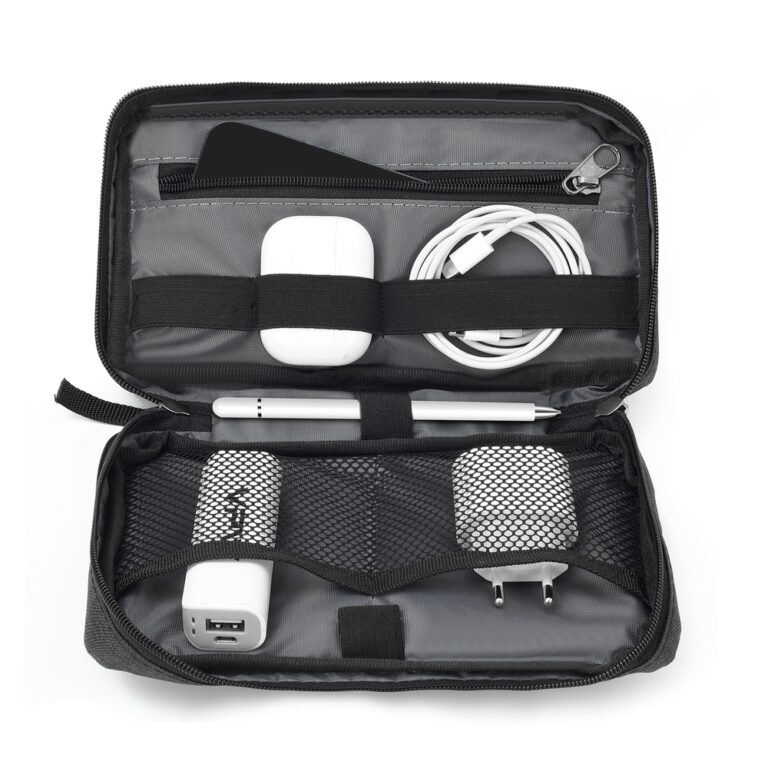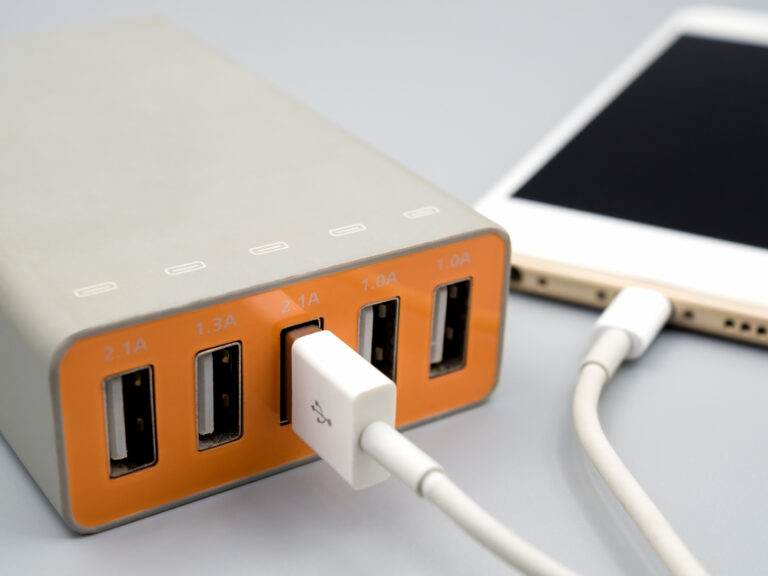
All RVers know the struggle of keeping their electronic devices charged when on the road.
Shore power helps ease some of this hassle, but the tangle of connectors and power cords can still be a pain. To make things worse, it’s easy to forget to plug in your electronics. There has to be another way!
For tips on solving this problem, we turn to expert RVer, Mike Wendland from the site Roadtreking.com. Mike and his wife travel and run a popular website and podcast from a small Class B RV. Which means they are well-versed in the issue of keeping electronics charged and organized. Mikes admits that it wasn’t always easy to deal with all those cords and connectors.
We learned early in Roadtreking that everything needs to have an “away” place. Avoid clutter at all costs. Your rig will feel cramped if you are always moving stuff to make room.
The first item that eased the hassle of electronic charging for Mike was a folio-size zippered case. They loaded it up with 12 VDC and 120 VAC connectors along with a variety of plugs that fit mini-USB, micro-USB, and other phone connectors. Its small size will make it easy to store out of the way in a cupboard.
Before bed, they pull it out, open it, put it on the stove cover, and plug in all their devices. When they have access to shore power they use the 120 VAC plug. If they are boondocking, the 12 VDC plug comes in handy.

The next thing Mike added to make charging on the go easier was a 12VDC multiport USB charger. The Wendlands are passionate boondockers who more often than not are not connected to shore power. As is common in most RVs, the Roadtrek didn’t have enough 12 VDC outlets in convenient places, which meant they were constantly stretching the cords long distances. To avoid this mess of draping cords they ordered a 12 VDC multiport from Amazon and wired it into the 12VDC on the Roadtreck then mounted it near their charging station.
While this worked well for all their small devices, charging their laptops required another solution. Laptops use a lot of power, and even more when run off an inverter. To solve this problem, they bought 12 VDC to 20 VDC adapters. It’s generally easy to find ones that fit any model laptop either on eBay or Amazon.
These solutions helped Mike gain control of all his charging needs, and they can help you too. It is important to note though, that everyone has different needs when it comes to electronics and keeping them powered. Be sure to take a good look at your devices and assess how often you charge them before running out and buying a bunch of adapters. Happy RVing!






